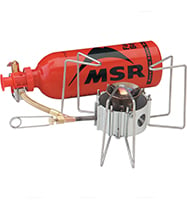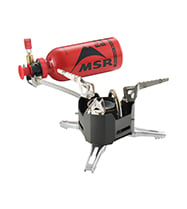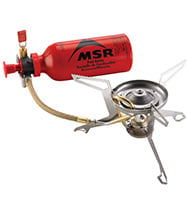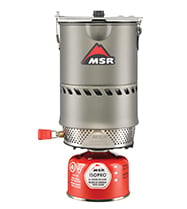Fuels Around the World: Finding Stove Fuel In A Foreign Country

Planning for an international adventure—whether it’s trekking in the Himalayas, bikepacking the Alps, or hiking through Pakistan—requires extra consideration of gear, especially stove options. While you can fly with your stove, you can’t fly with most common stove fuels. This may leave you asking:
How do I find the stove fuel I need in a foreign country? And, what other types of fuel can I use?
Multiple things come into consideration when deciding which stove to take in the first place—region, trip duration and season all factor in. And it’s important to thoroughly research the specific locations you’re headed to (travel forums are a great place to start). But here are the basics to know when planning to take your favorite stove abroad with you.
Liquid camping fuel (white gas, naptha, “Coleman fuel”) and gas fuel canisters are sold in a variety of places worldwide these days. In addition to North America, Europe offers many options. Thus, if you’re on a fast-paced, weight-conscious trek through the Alps, an efficient canister stove like the Reactor is a safe bet and a convenient choice.
But for trips into the developing world or remote adventures far from the beaten path and re-supply stations, a multi-fuel stove remains the gold standard for world travelers. No matter where you go, you’ll be able to find fuel for a stove such as the XGK EX or WhisperLite Universal.
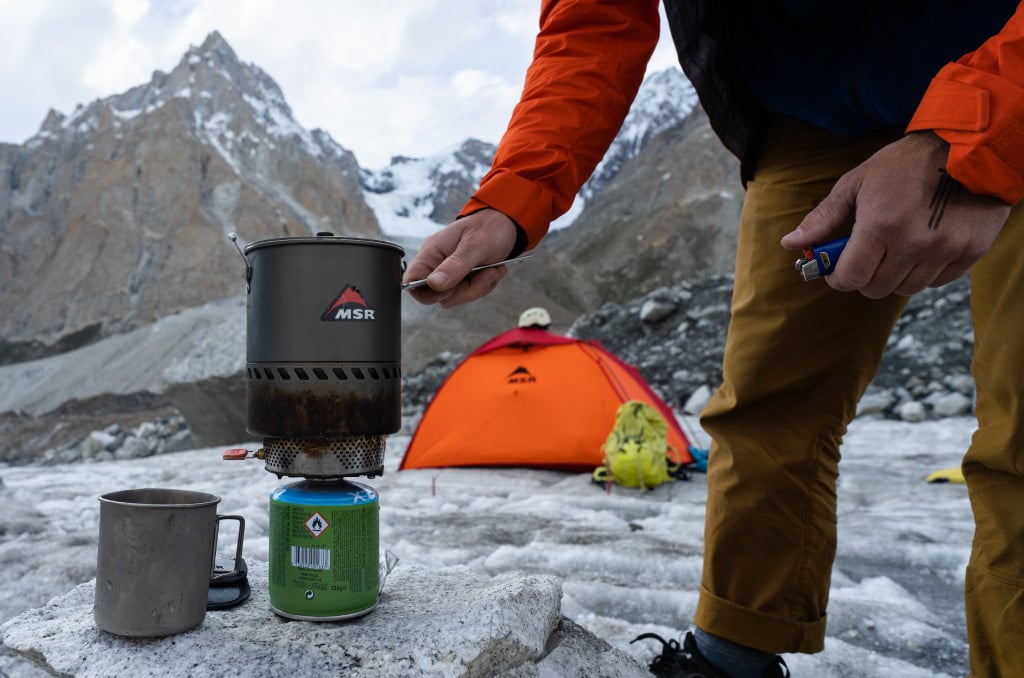
Gas Canisters: Fuel Availability & Options
Canister fuel (butane, propane, or a blend of both) is widely sold, but it’s not everywhere. In places like North America, Europe and popular tourist or climbing regions such as Patagonia and the Khumbu in Nepal, you can expect to find canister fuels for sale. If you can’t locate an outdoor shop, check a hardware store, gas station or convenience store. These days, most canisters use a standard threaded valve, so compatibility is less of a challenge than it used to be.
You can be confident in finding canister fuels in these regions:
- North America
- Patagonia
- Himalayas
- Pakistan
- Israel
- Europe
- South Africa
- Parts of Central America
Buy from a reputable source to confirm that you’re never purchasing a refilled canister. We’ve heard stories of canisters being dangerously refilled with 100% propane, the pressure of which most canisters are not designed to withstand.
For MSR canister fuel stoves, you’ll need a threaded, self-sealing canister. MSR IsoPro canisters are sold worldwide.
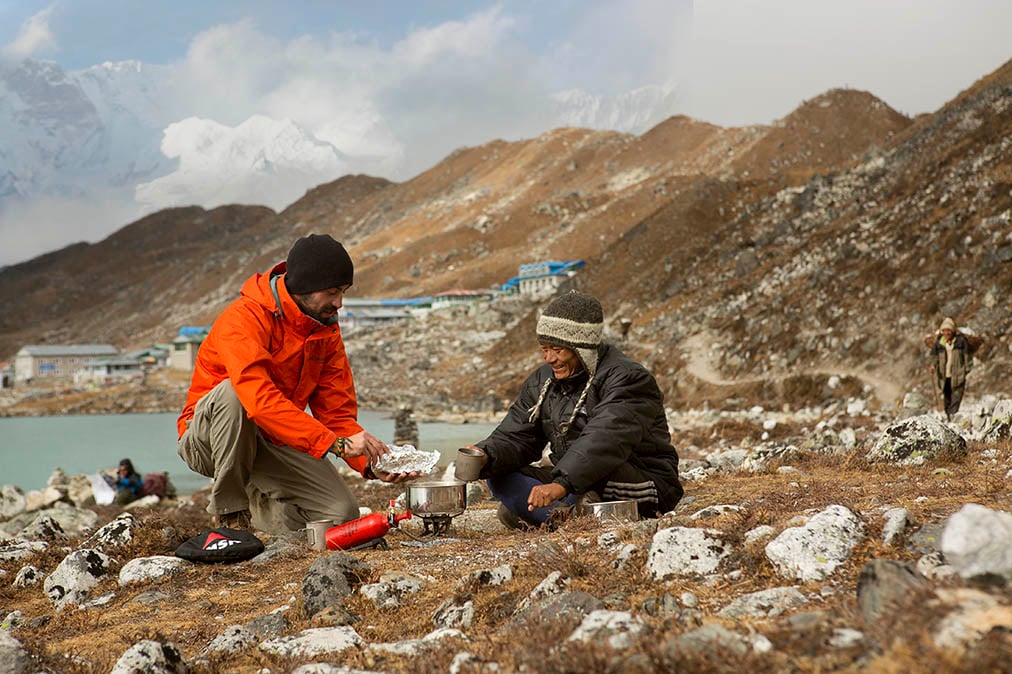
Liquid Fuels: Availability, Options & International Names
Like canisters, traditional camping fuel (white gas, such as MSR’s clean-burning blend of SuperFuel) can be found in outdoor stores, hardware stores and gas stations in most developed regions. But if you’re headed into the unknown, there’s a good chance you’ll rely at some point on one of these fuels listed below. There are advantages and disadvantages to each that you’ll want to be aware of, but this is a brief overview. Then, to see a list of the translations of liquid fuel names around the world and their general availability, check out the chart at the bottom.
Kerosene
Even in the most remote reaches of the globe, you can count on finding kerosene in markets or shops. Its quality and refinement vary greatly from region to region, and it’s dirty, stinky and can be harder to light. But it’s inexpensive and so widely available that it’s the fuel relied on by many a global vagabond.
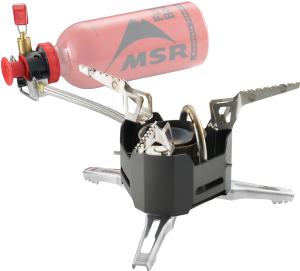
Diesel
Often, diesel is easier to get than white gas. Unfortunately, like kerosene, its quality varies, it’s foul-smelling and can clog your stove quickly. The XGK EX stove, an expedition powerhouse, can handle diesel better than nearly any other stove on the market, requiring less maintenance with such dirty fuels.
Automotive Gasoline
While auto-gas (petrol) may seem like an obvious contingency fuel given the accessibility of gas stations in many parts, you should consider it a last resort. Though it burns hotter than kerosene, it has disadvantages including the fact that the superheating process of backpacking stoves causes the additives and impurities in gasoline to clog your stove quickly.
Denatured Alcohol/Spirits
You must have a specific alcohol-burning stove to burn spirits; these stoves don’t fall under the typical class of “liquid-fuel” stoves. Alcohol stoves are often homemade and preferred by the fast-and-light crowd as they tend to be ultralight.
Of course, there are other options for stove fuels out there, but those are the types you’re most likely to encounter. Before your trip, understand the types of fuel your stove accommodates, lest you find yourself miles from the nearest town with a fuel you can’t use.
For fuel name translations, click the chart. And share your own experiences with finding fuels in foreign countries in the comments section below.
Fuel Availability in Australia
| U.S. Fuel Name | Translation | Available |
|---|---|---|
| White Gas | shellite | Yes |
| Kerosene | kerosene | Yes |
| Diesel | diesel | Yes |
| Automobile Gas | petrol | Yes |
| Mineral Spirits | white spirits | Yes |
| Aviation (AV) Gas | AV gas, jet al | Yes |
Fuel Availability in Belgium
| U.S. Fuel Name | Translation | Available |
|---|---|---|
| White Gas | wasbenzine | Yes |
| Kerosene | petroleum | Yes |
| Diesel | diesel | Yes |
| Automobile Gas | loodvrije benzine | Yes |
| Mineral Spirits | spiritus | Yes |
| Aviation (AV) Gas | kerosine | Yes |
Fuel Availability in Denmark
| U.S. Fuel Name | Translation | Available |
|---|---|---|
| White Gas | renset benzin | Yes |
| Kerosene | petroleum | Yes |
| Diesel | diesel | Yes |
| Automobile Gas | benzin | Yes |
| Mineral Spirits | spirit | Yes |
| Aviation (AV) Gas | fly benzin | Yes |
Fuel Availability in France
| U.S. Fuel Name | Translation | Available |
|---|---|---|
| White Gas | essence “c” | Yes |
| Kerosene | petrole, lampante | Yes |
| Diesel | gazole | Yes |
| Automobile Gas | essence normale, essence sance plomb | Yes |
| Mineral Spirits | espirit-de-vin or alcool | No |
| Aviation (AV) Gas | carburéacteur | Yes |
Fuel Availability in Germany
| U.S. Fuel Name | Translation | Available |
|---|---|---|
| White Gas | reinigungsbenzin, kocherbenzin | Yes |
| Kerosene | petrol | Yes |
| Diesel | diesel | Yes |
| Automobile Gas | superbenzin (bleifrei) | Yes |
| Mineral Spirits | spiritus | No |
| Aviation (AV) Gas | flugbenzin, AV gas, kerosin | Yes |
| Jet Fuel | kerosin, flugbenzin | Yes |
Fuel Availability in Holland
| U.S. Fuel Name | Translation | Available |
|---|---|---|
| White Gas | wasbenzine | Yes |
| Kerosene | petroleum, lampenolie | Yes |
| Diesel | diesel | Yes |
| Automobile Gas | loodvrije benzine | Yes |
| Mineral Spirits | spiritus | Yes |
| Aviation (AV) Gas | kerosine | Yes |
Fuel Availability in Israel
| U.S. Fuel Name | Translation | Available |
|---|---|---|
| White Gas | delek lavan | Yes |
| Kerosene | neft | Yes |
| Diesel | diesel | Yes |
| Automobile Gas | delek natul 95, delek natul 98 | Yes |
| Mineral Spirits | —— | No |
| Aviation (AV) Gas | jet fuel | No |
Fuel Availability in Italy
| U.S. Fuel Name | Translation | Available |
|---|---|---|
| White Gas | benzina bianca | Yes |
| Kerosene | kerosene | Yes |
| Diesel | gasolio per autotrazione | Yes |
| Automobile Gas | benzina per autoveicoli | Yes |
| Mineral Spirits | —— | No |
| Aviation (AV) Gas | jet fuel | No |
Fuel Availability in Japan
| U.S. Fuel Name | Translation | Available |
|---|---|---|
| White Gas | white gasoline | Yes |
| Kerosene | hakutohyu | Yes |
| Diesel | keiyu | Yes |
| Automobile Gas | gasoline | Yes |
| Mineral Spirits | —— | No |
| Aviation (AV) Gas | jet nenryou | Yes |
Fuel Availability in Spain
| U.S. Fuel Name | Translation | Available |
|---|---|---|
| White Gas | becina blanca, solvente | Yes |
| Kerosene | keroseno, petroleo | Yes |
| Diesel | gasoleo automocion | Yes |
| Automobile Gas | gasolina automocion | Yes |
| Mineral Spirits | disolvente | Yes |
| Aviation (AV) Gas | keroseno aviacion | Yes |
Fuel Availability in Sweden
| U.S. Fuel Name | Translation | Available |
|---|---|---|
| White Gas | ren bensin, industri bensin | Yes |
| Kerosene | fotogen | Yes |
| Diesel | diesel | Yes |
| Automobile Gas | bilbensin, blyad, blyfri | Yes |
| Mineral Spirits | t-röd | No |
| Aviation (AV) Gas | flybensin | Yes |
| Other | grön bensin, t-gul | Yes |
Fuel Availability in Switzerland
| U.S. Fuel Name | Translation | Available |
|---|---|---|
| White Gas | reinbenzin, fleckenbenzine wundbenzin |
Yes |
| Kerosene | petrol | Yes |
| Diesel | diesel | Yes |
| Automobile Gas | superbenzin, bleifreibenzin | Yes |
| Mineral Spirits | —— | No |
| Aviation (AV) Gas | gasflugbenzin, AV gas | Yes |
| Jet Fuel | kerosin | Yes |
Fuel Availability in Taiwan
| U.S. Fuel Name | Translation | Available |
|---|---|---|
| White Gas | 去漬油 | Yes |
| Kerosene | 煤油 | Yes |
| Diesel | 柴油 | Yes |
| Automobile Gas | 汽油 | Yes |
| Mineral Spirits | 礦物油 | Yes |
| Aviation (AV) Gas | —— | No |
Fuel Availability in United Kingdom
| U.S. Fuel Name | Translation | Available |
|---|---|---|
| White Gas | white gas | Yes |
| Kerosene | paraffin | Yes |
| Diesel | diesel | Yes |
| Automobile Gas | petrol | Yes |
| Mineral Spirits | white spirits | Yes |
| Aviation (AV) Gas | aviation fuel | No |
Updated. Originally published on July 25th, 2014.

